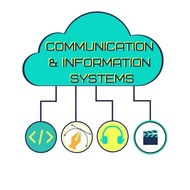
(View Complete Item Description)
Students will learn how to produce their own sounds to add to their video projects. This technique is called Foley Art. There are several excellent videos that can be shown during class or assigned as a flipped assignment. Either way, these videos should draw great discussion during class on how to capture homemade produced sounds. Some of the videos I use come from YouTube and are titled "The Magic of Making Sound," "This Artist Creates Sounds for Movies," "How the Sound Effects in 'A Quiet Place' Were Made," "Foley Artists: How Movie Sound effects are Made," and "The Hunger Games & Frozen Foley Artists Turn the Sound of Junk into Miracles--Art of Sound Ep. 3." Simply do a search for Foley Art. After the discussion, students will then select a movie trailer, convert the trailer into a file format that works with their video editing software. Once the file is uploaded into their software, students will remove/detach the audio and begin brainstorming appropriate sound effects and how these can be made for the video. Students should compile a list of at least 10 sound effects. After all students have their lists, divided the students into groups. I find that it is necessary to have more than one person in order to effectively produce the sounds. Once students are in their groups, combine their lists, and come up with 10 sounds they think they can personally produce. Students will need to brainstorm props that can be used to produce their sounds. Once the sounds have been created, each student will then add, trim, and edit the sounds and add to the movie trailer.
After the last day of editing, the students will come back together with their group and show their video to the class. Students should explain how sounds were created.
Material Type:
Activity/Lab,
Homework/Assignment,
Lesson,
Lesson Plan
Author:
Dawn Friedrich




















